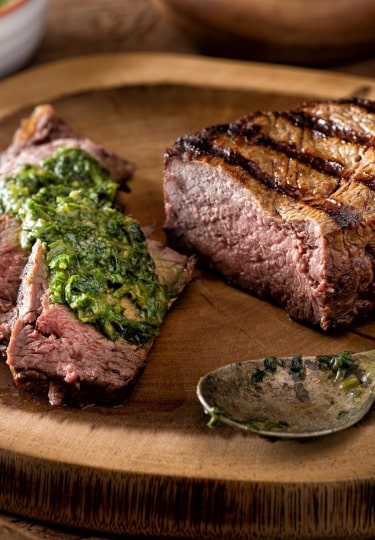Waves of immigrants from Italy, Spain, Portugal, and France have left their mark on Uruguayan cuisine. Over the centuries, this has evolved to reflect the produce of the country, from grass-fed beef to cheese, vegetables, and fruits including quince, apples, peaches, melons, and tangerines.
Uruguayan cuisine is undeniably meaty; beef, chicken, pork and lamb are widely consumed, often barbecued as a traditional asado. Uruguayans have a sweet tooth, too, and you’ll find all manner of sugary snacks sold as street food, the creamy dulce de leche sauce or spread as an accompaniment to pretty well anything.
But in recent years, a sophisticated and much more eclectic foodie scene has sprung up in Montevideo and beyond. You’ll find craft beers, artisanal gins using locally foraged botanicals, subtly flavored cheeses, and hand-roasted coffee.
Here’s some of the best Uruguayan food to try on your next visit.
Asado
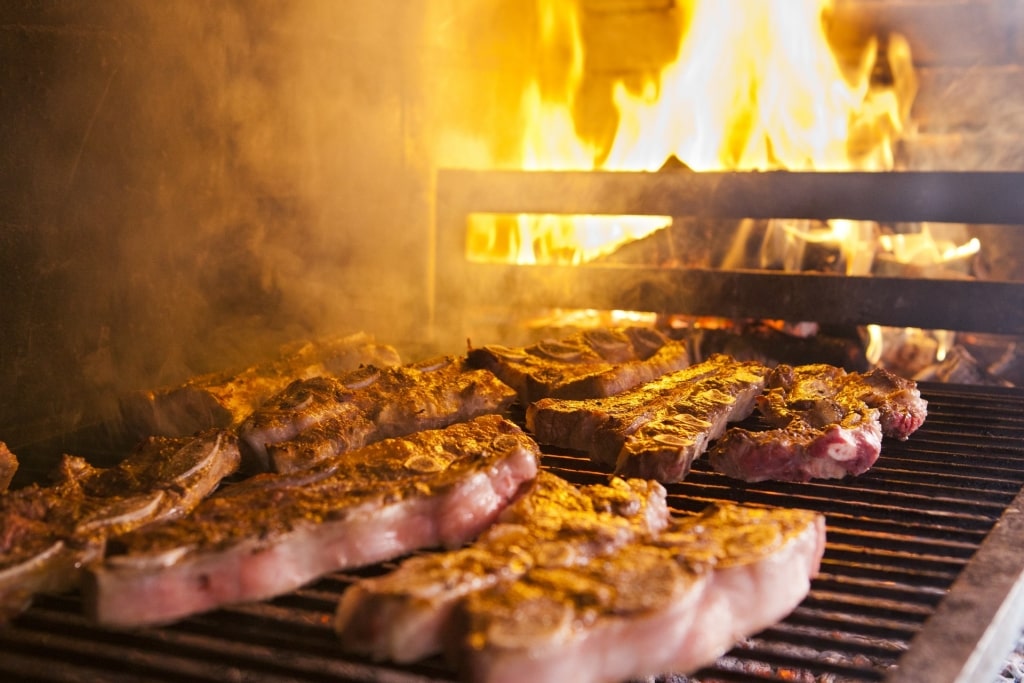
Asado
Asado is a meal of grilled meat and is central to Uruguay’s culinary scene. It’s served in a parrilla, or grill restaurant, or cooked at home as a social occasion.
Anything can be served if you order asado—beef, chicken, lamb, pork and usually, sausages and offal—and when it’s cooked at home, it’s typical to invite a large crowd of friends and family to join the feast.
The meat is grilled over an open fire, using wood as opposed to the Argentinean method, which favors coals. The asado may start at lunchtime and last late into the night. The meat is enjoyed with wine, beer, salads and vegetables. You’ll see plenty of parrilla restaurants promising the best asado in town.
Some dishes are a little more complex than straightforward grilled meat. Pamplona, for example, is chicken or pork, deboned and rolled into a long sausage shape around ham, cooked bell peppers, and a stick of mozzarella.
Uruguayan cuisine is not all bad news for vegetarians. Potatoes topped with cheese or butter are roasted on the grill, as are eggplant, zucchini, and bell peppers stuffed with cheese, egg, or both.
Wine

Wine
Uruguay has more than 200 wineries and is making a name for itself on the world scene; critics often rate Uruguayan wines alongside the big-hitters from neighboring Argentina.
Wine has, in fact, been produced in Uruguay for generations; the first vines were brought over by the Spanish in the 17th century. The most popular grape by far is tannat; one in every three bottles of wine made in Uruguay is a tannat. This full-bodied, deep red wine is the perfect accompaniment to the many meat dishes served in Uruguay.
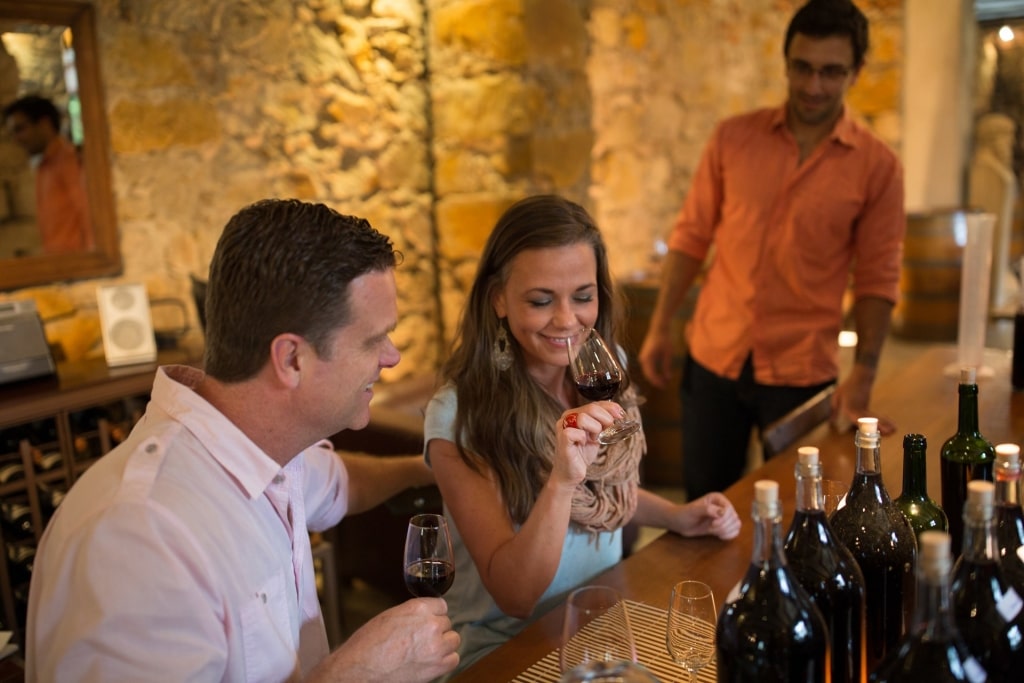
Wine
White wine drinkers aren’t forgotten; try an albariño, another wine from a Spanish grape, packed with mineral and fruity flavors. You’ll also find classy chardonnays and sauvignon blanc choices.
Taste Uruguayan wines for yourself at one of the wineries near Montevideo. Bodega Spinoglio offers guided tours and tastings, and also has a restaurant serving traditional dishes cooked over a wood fire.
Dulce de Leche

Dulce de Leche
Dulce de leche—a dark, creamy caramel sauce made with sugar and milk—goes with pretty much anything in Uruguay. It can be poured on desserts instead of cream, or used as a spread on a piece of bread for breakfast.
Ice cream may be dulce de leche flavored. Churros—long, fried donuts coated with sugar—may come stuffed with dulce de leche. You may also find dulce de leche as the main filling in pasta frola, a tart with a pastry base and strips of pastry crisscrossed on the top. Traditionally, pasta frola is filled with quince jam, but Uruguayans need little excuse to substitute their beloved dulce de leche.
Mate
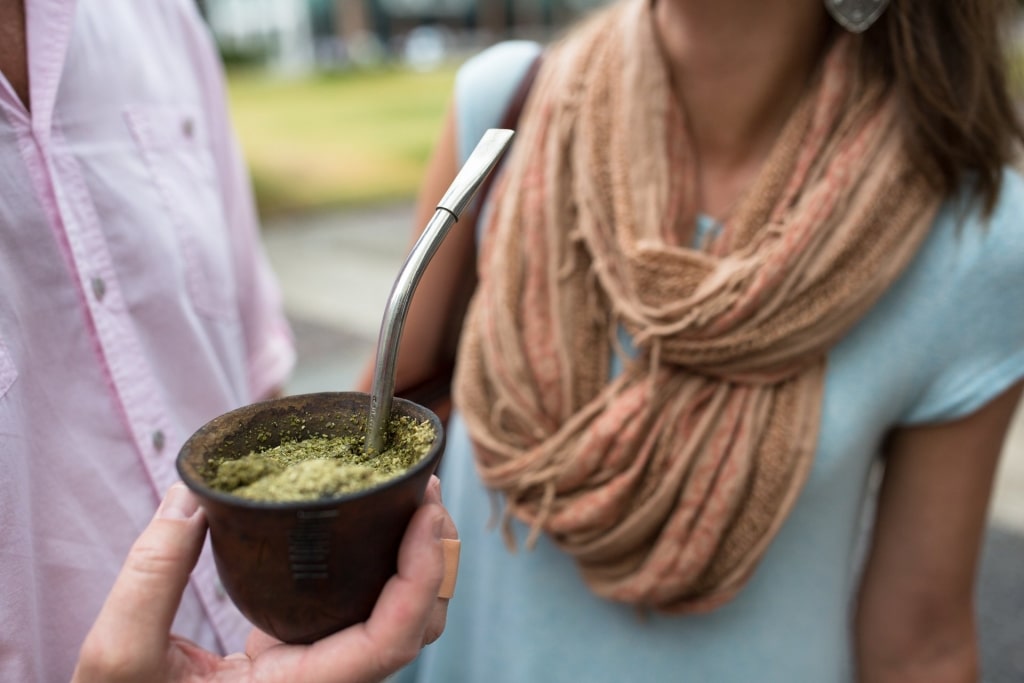
Mate
Mate (pronounced mah-tay) is the national drink of Uruguay; everybody loves it and no self-respecting Uruguayan would leave their home without a thermos of this warm, uplifting herbal tea.
Mate is made from the dehydrated and shredded leaves of yerba, a shrub, and has a strong, bitter, herby flavor. It’s traditionally drunk through a metal straw.
Mate is believed to be incredibly healthy, packed with vitamins and minerals and serving as a stimulant without inducing the racing heart that coffee can sometimes provoke. It’s also supposed to have anti-aging properties.

Mate
Mate is one of the secrets to the Uruguayan habit of dining late. People typically go out for dinner at 8 pm at the earliest, with many not arriving in a restaurant on weekends until 9 pm or 10 pm. As such, something is needed to fill the gap between lunch and dinner.
This is the time to enjoy an invigorating mate with something calorific: bizcochos, savory pastries filled with ham and cheese, or the sweet version, oozing dulce de leche, quince jam, or custard.
You’ll see locals buying these with their morning coffee and saving them for their merienda, or tea time.
Chivito
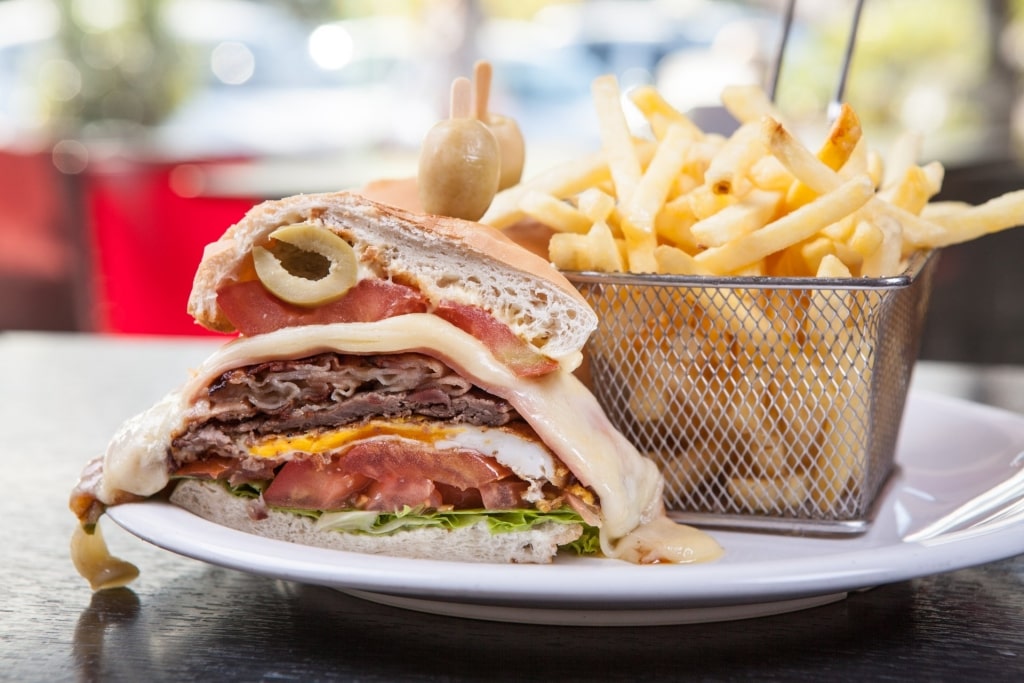
Chivito
Although it’s translated as “small goat”, chivito doesn’t actually include goat. Perhaps the name is a metaphor for the colossal size of this multi-layered sandwich.
The principal ingredient is slices of beef, but there’s way more: lettuce and tomato, bell peppers, more meat in the form of ham and bacon, olives, mozzarella, pickles, at least one fried egg, and a layer of mayonnaise.
The whole ensemble is served with a large portion of fries. You can reduce the carb content by skipping the fries and asking for your chivito “al plato”, which means without the bread.
Milanesa
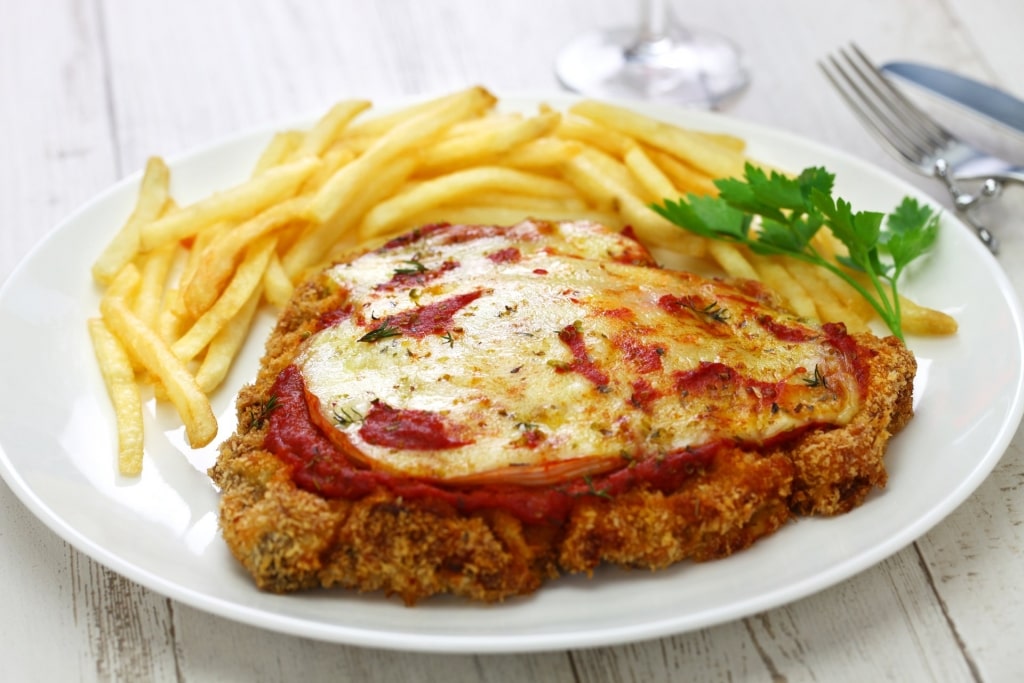
Milanesa
Milanesa is Uruguay’s answer to the Wiener Schnitzel or cotoletta Milanese and is another legacy of European colonizers. Tenderized meat is brushed with egg, coated in breadcrumbs and fried.
But while the Viennese version is made with veal, Uruguayans prefer their own grass-fed beef. You could ask for chicken or pork milanesa, though. And if you order it a la napolitana, it will come with tomato sauce, ham, and melted cheese.
Empanadas
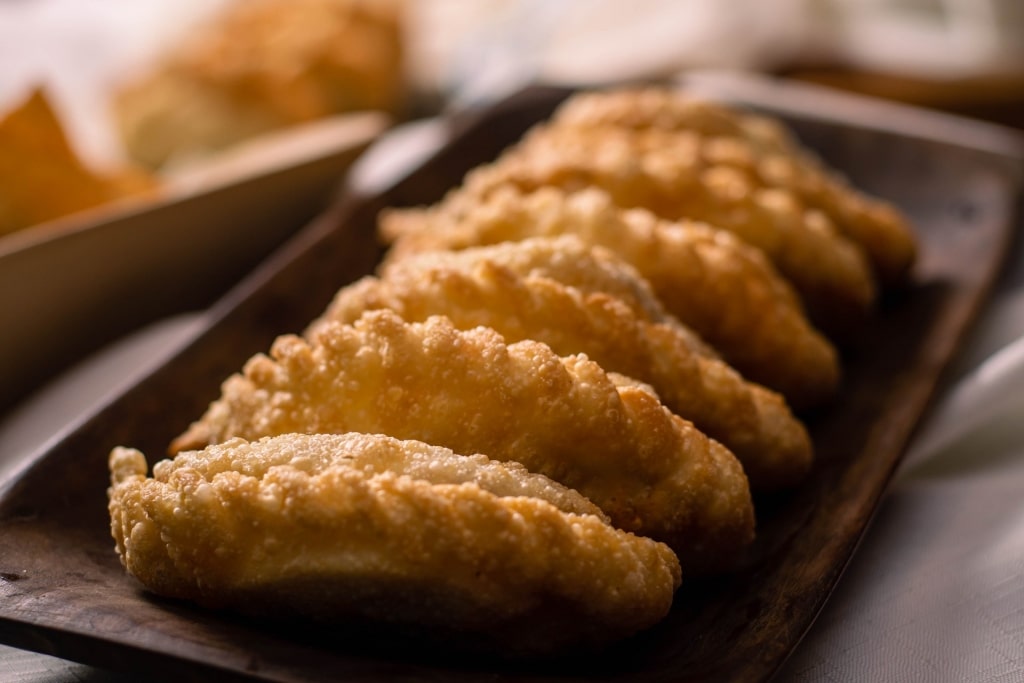
Empanadas
Empanadas are little crescent-shaped meat pies, a famous street food in Uruguay. You’ll find them all over South America, as well as in Europe, particularly Spain, with multiple countries laying claim to having the best filling, or the most perfect dough.
The traditional filling for empanadas is beef, seasoned with onions, peppers, garlic and sometimes olives. But you’ll find chicken empanadas, too, as well as creamy fish and sometimes vegetarian versions filled with mushrooms, hummus, or spinach.
There are sweet versions, too, filled with a mixture of baked apple, raisins and cinnamon, quince jam, or the ubiquitous dulce de leche. Empanadas are a classic Uruguayan food.
One is never enough, so stock up with a few different flavors. Make sure the vendor is serving them fresh and prepare for a treat.
Choripán
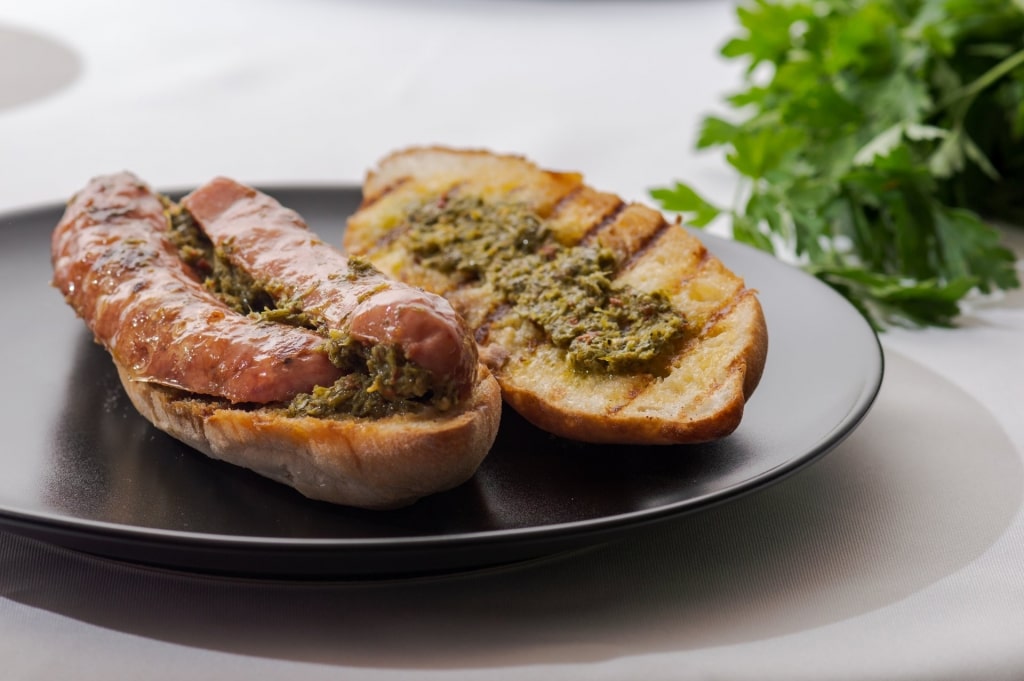
Choripán
Smoky chorizo sausage is what gives choripán its rich flavor. The chorizo is grilled and served in a baguette roll, topped with onions, tomatoes and chimichurri sauce, made from chopped parsley, oregano and garlic, with olive oil, vinegar, and seasonings. You’ll find this South American food all over the region, but Uruguayans love it as a snack or for lunch on the go.
Tortas fritas
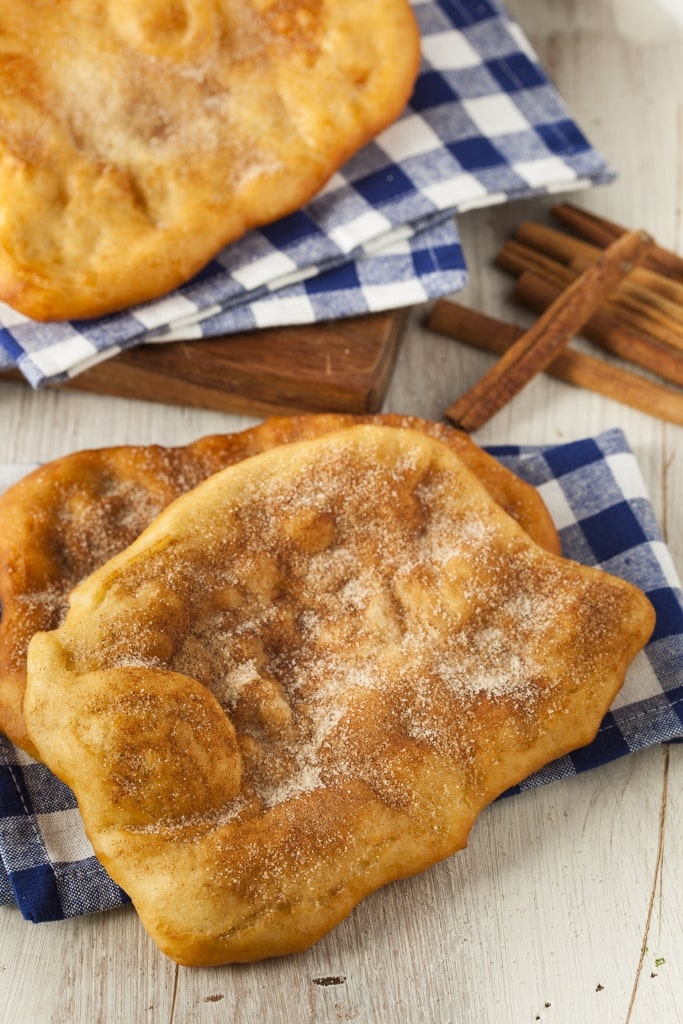
Tortas fritas
Uruguayans love their sugar carbs, hence tortas fritas. You’ll see this simple street food dish everywhere, especially in winter. It’s a small square of donut dough, topped with sugar and sometimes dulce de leche; the ultimate comfort food.
Fainá
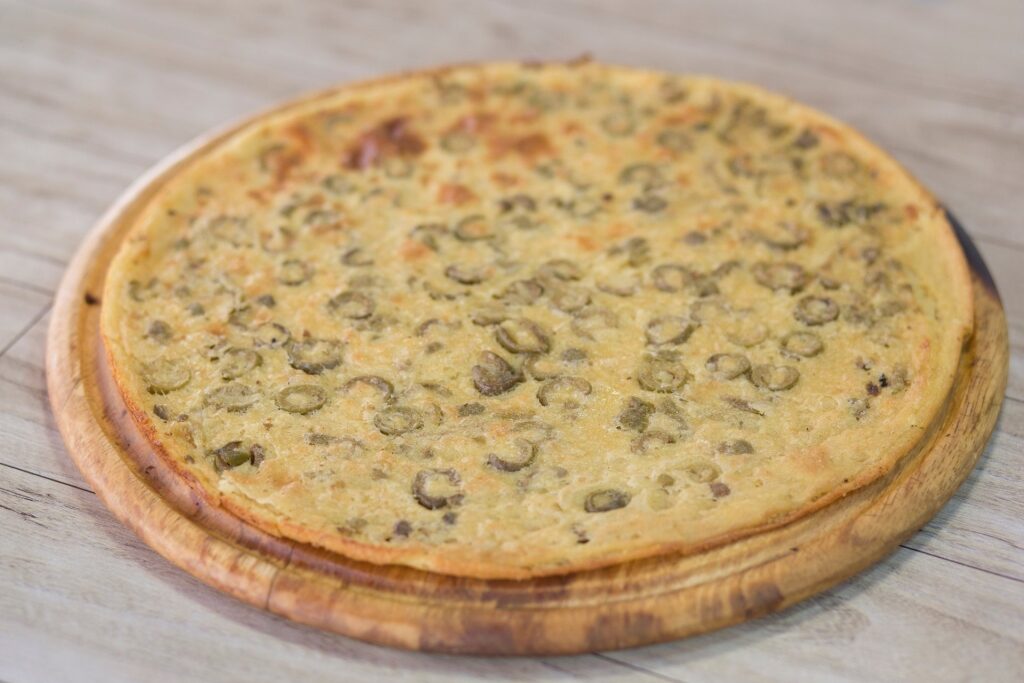
Fainá
Fainá is a crispy, peppery pancake made from chickpea, or garbanzo bean flour, making it ideal for anyone intolerant of gluten. It’s believed to be related to the Italian flatbread, faranita, with origins in Italy’s Liguria region.
Fainá may be baked with toppings, from chorizo to mozzarella, but somewhat bizarrely, it’s a topping in its own right, served on top of a pizza and called pizza a caballo, or pizza on horseback.
Arroz con Leche
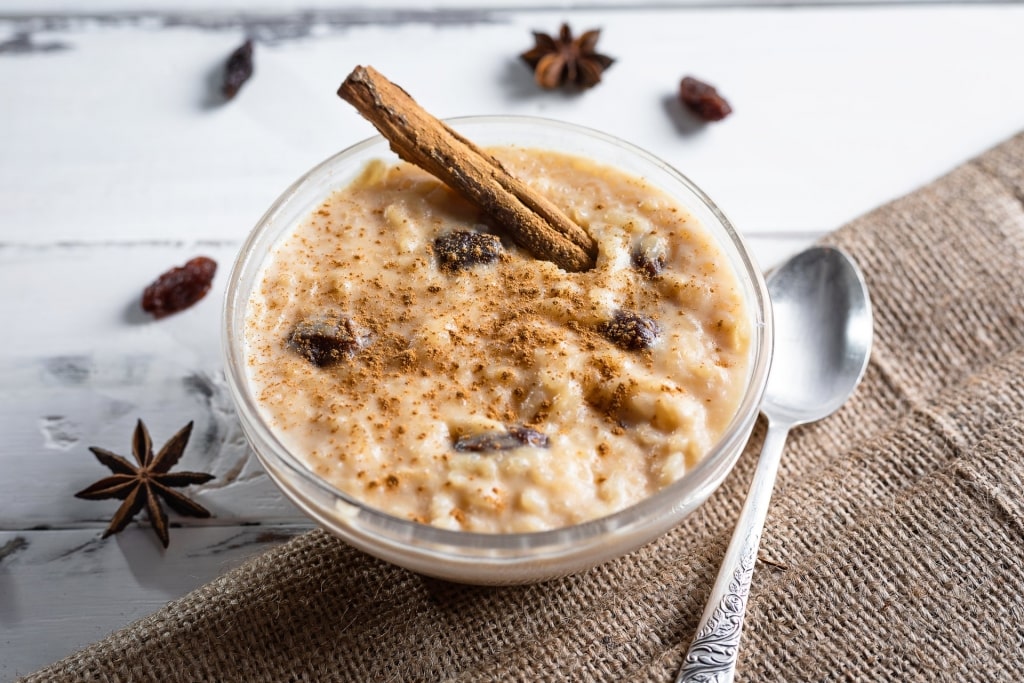
Arroz con Leche
This sweet and delicious rice pudding consists of white rice, cooked with milk, eggs and sugar. Cinnamon is usually sprinkled on top, as well as a healthy dollop of dulce de leche. Arroz con leche can be served hot or cold and is a staple of Uruguayan cuisine.
Chajá
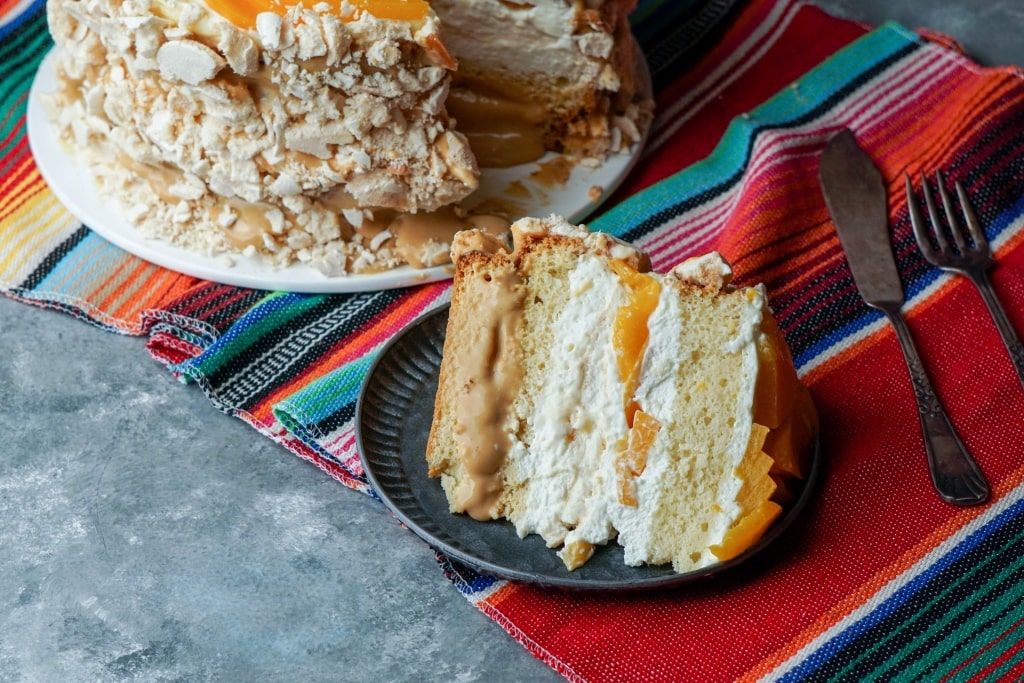
Chajá
A traditional Uruguayan dessert, chajá is a delicious combination of layered sponge cake, meringue, and peaches, or sometimes strawberries with whipped cream. Needless to say, many people pour dulce de leche over their chajá, or add it as one of the layers. The whole confection is mouth-watering to look at and even better to taste.
Miniaturas
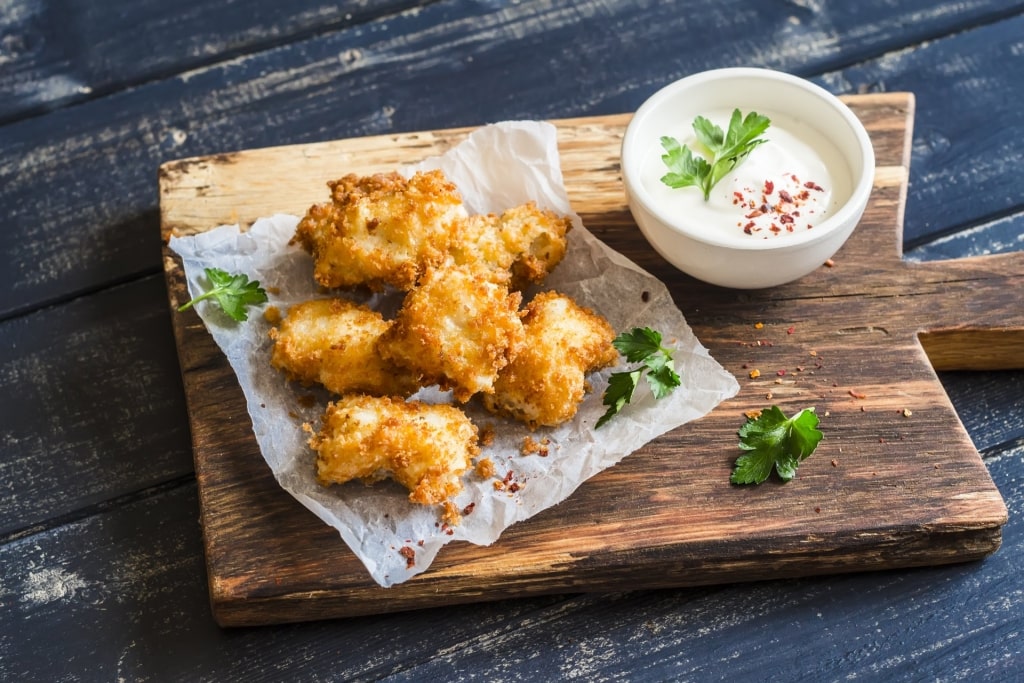
Miniaturas
With such a long coastline, scalloped with beautiful beaches, it’s no surprise that the locals flock to the seaside on sunny days. Here, fish is the star of the menu, not just beef.
Look out for miniaturas, or small pieces of white fish. They’re usually the south Atlantic corvina, dipped in a light batter, or sometimes breadcrumbs, and deep fried. Miniaturas are served with a squeeze of lemon and are often enjoyed as a starter or a sharing dish.
Sometimes, they’re served alongside buñuelos de algas, fresh seaweed fritters. The seaweed is harvested in the morning and simply deep fried in batter for a delicious and nutritious side dish.
Garrapiñada de Mani
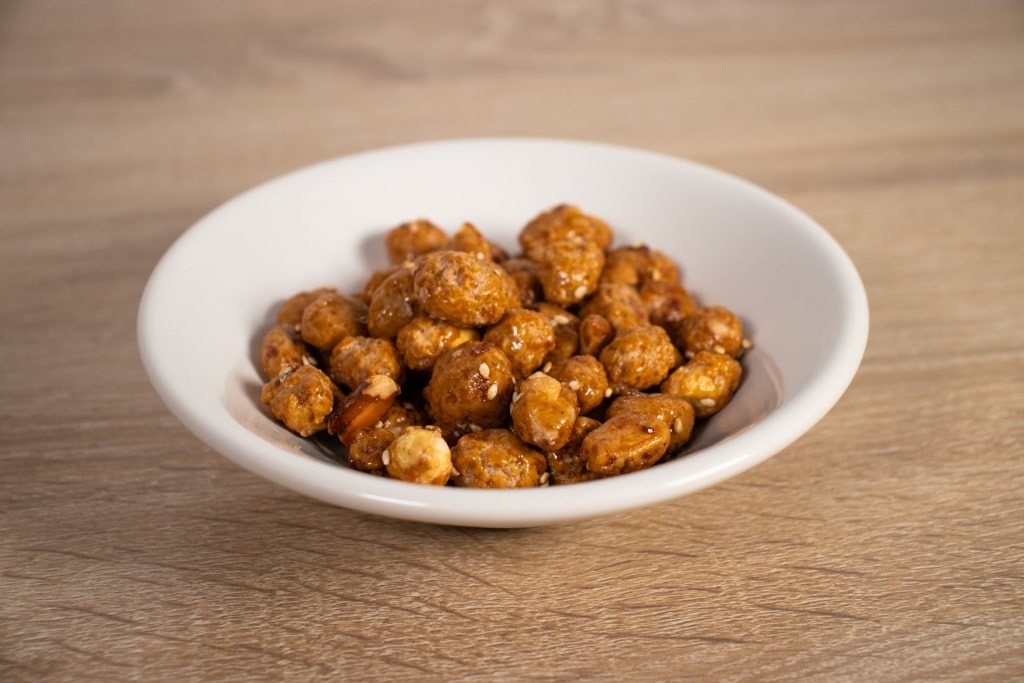
Garrapiñada de Mani
A classic Uruguayan street food snack, garrapiñada de mani consists of peanuts, caramelized in a big pan with sugar and vanilla. You’ll smell the sweet aromas as you wander around town; few can resist buying a still-warm bag of nuts as a sweet treat on the go.
What is the most popular food in Uruguay?
Grass-fed beef is a national favorite; you can’t say you’ve tried Uruguayan cuisine until you’ve experienced the asado, a feast of steak grilled over an open fire. Because the country produces so much meat, home-grown beef is widely available.
But other foods are synonymous with Uruguay, not least the thick, creamy dulce de leche, a caramel-like confection made with sweetened milk and added to almost any dessert.
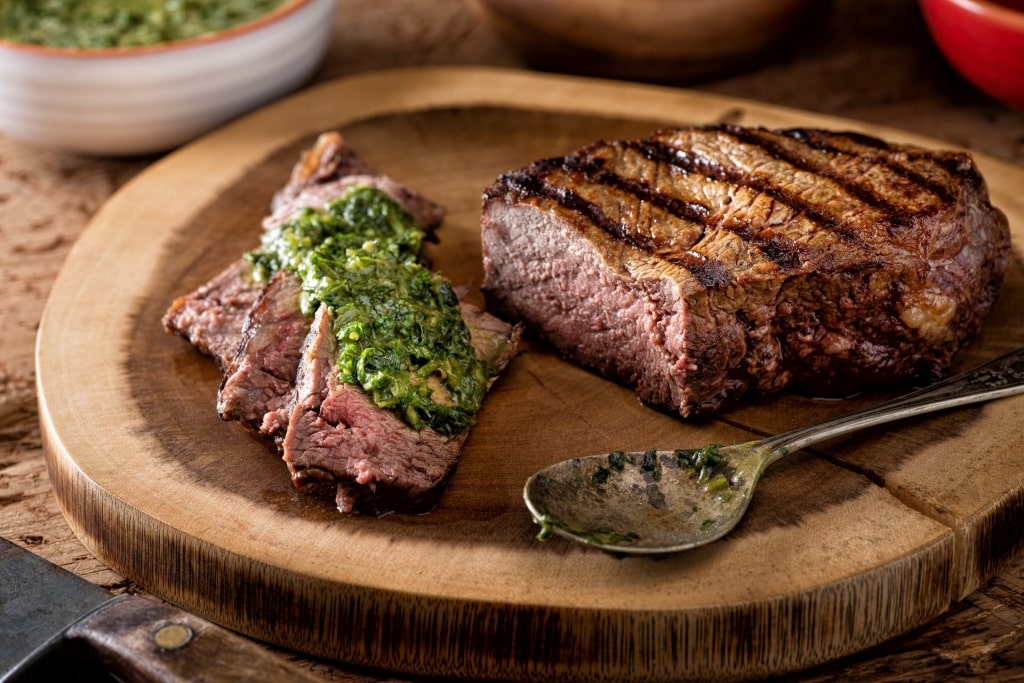
Asado
What is the typical breakfast in Uruguay?
Breakfast in Uruguay typically consists of cafe con leche—coffee with milk—with filled ham and cheese, or tomato and cheese sandwiches. Some people enjoy bizcochos, sweet or savory pastries. You may come across medialunas, similar to croissants but more dense in texture, filled with cheese and ham, too.
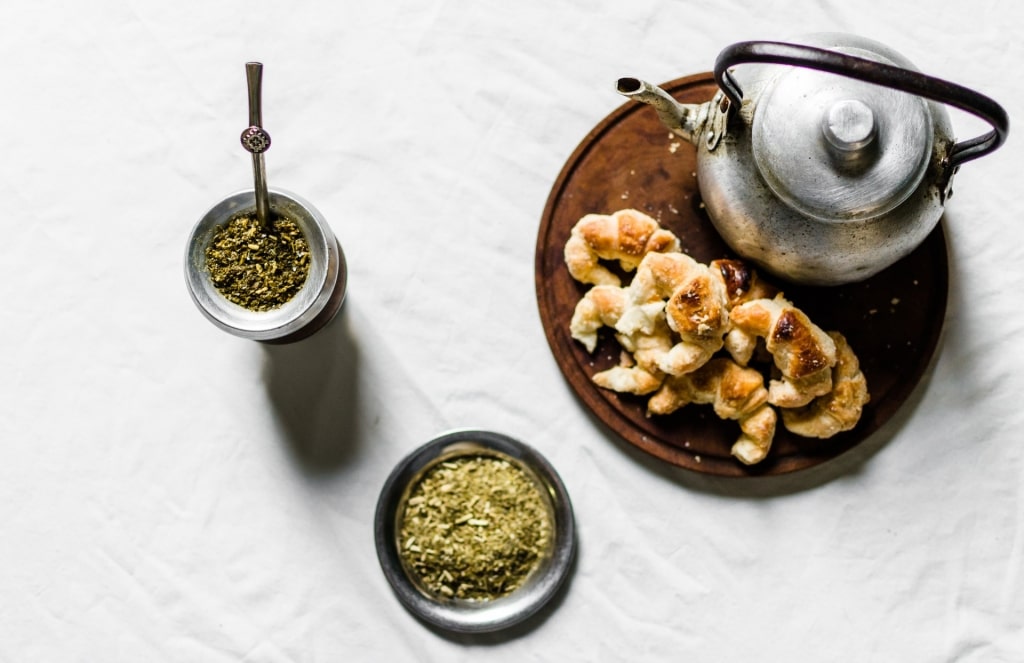
Mate
What is the most popular dessert in Uruguay?
The most classic Uruguayan dessert is chajá, a cake comprising layers of vanilla sponge, crumbled meringue, whipped cream and slices of peach. Other fruits can be substituted—and it goes without saying that many people enjoy their chajá with dulce de leche either on the top or as one of the fillings.
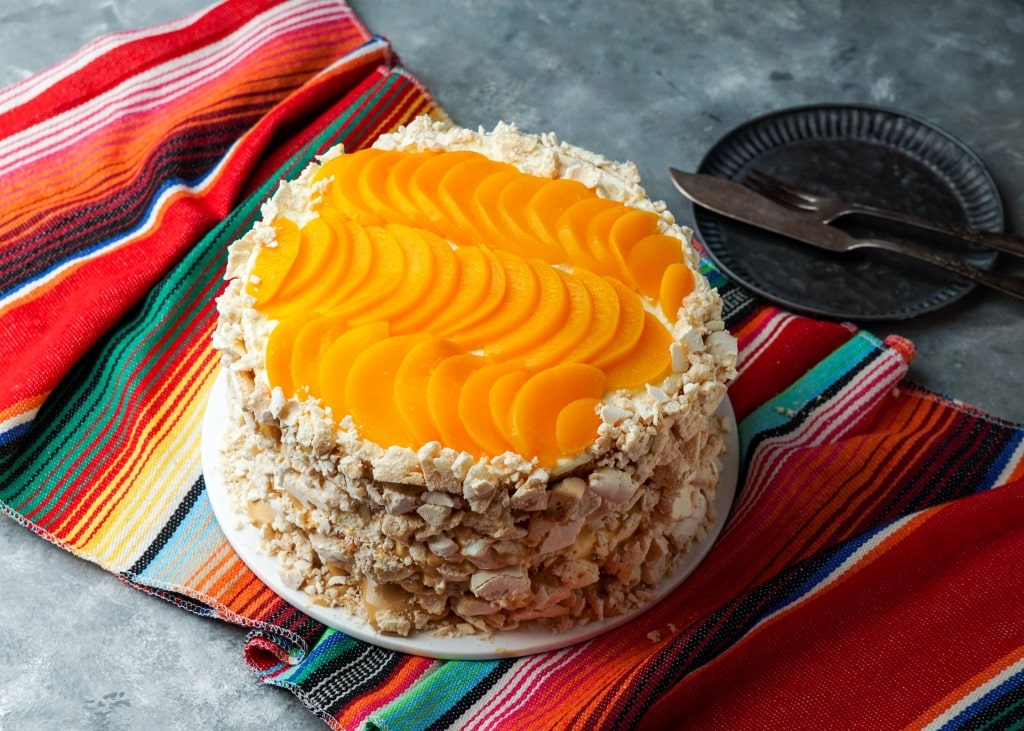
Chajá
Sample the exciting flavors of the country on a cruise to Uruguay. Browse itineraries on our website and plan a gourmet adventure.
